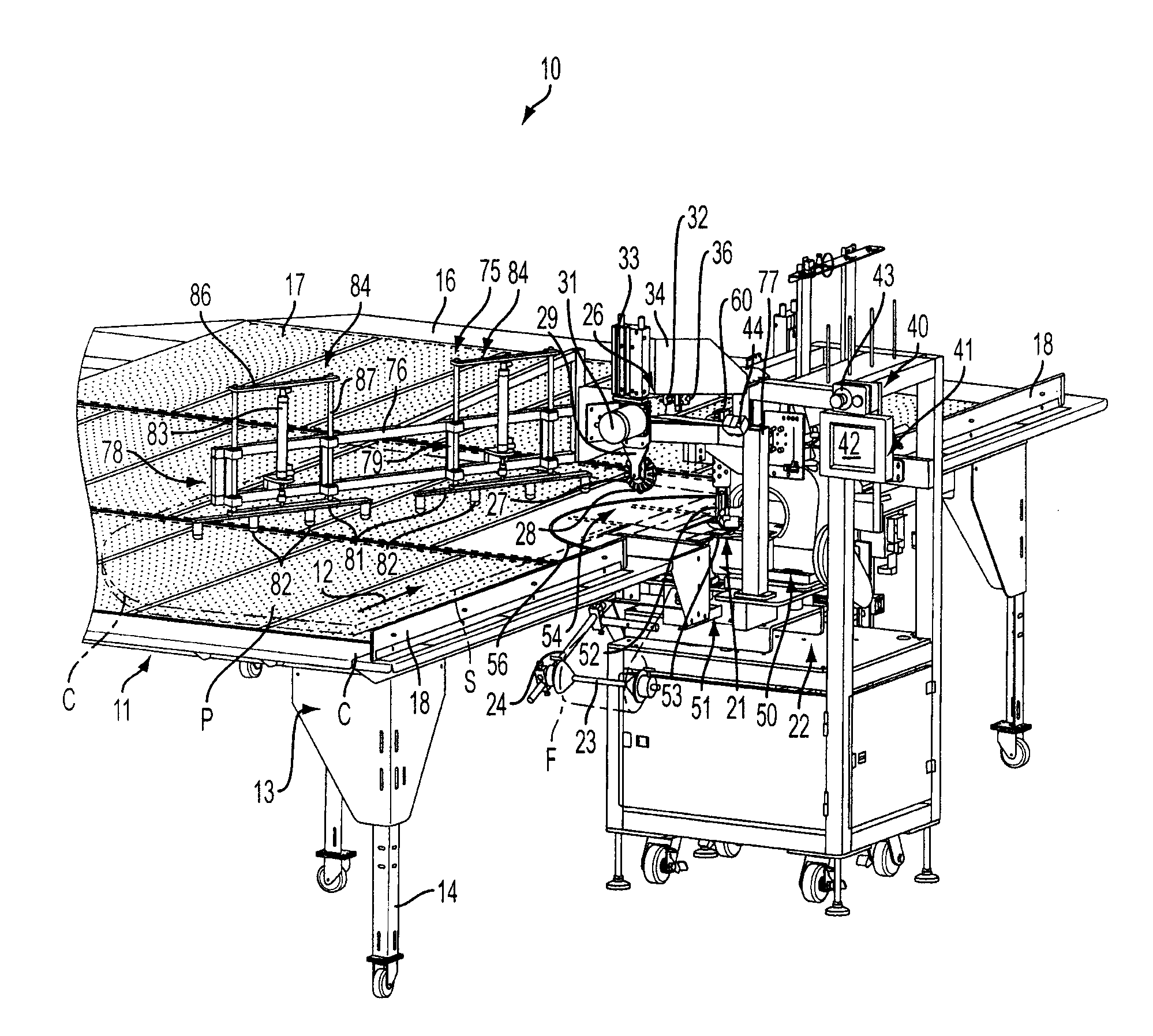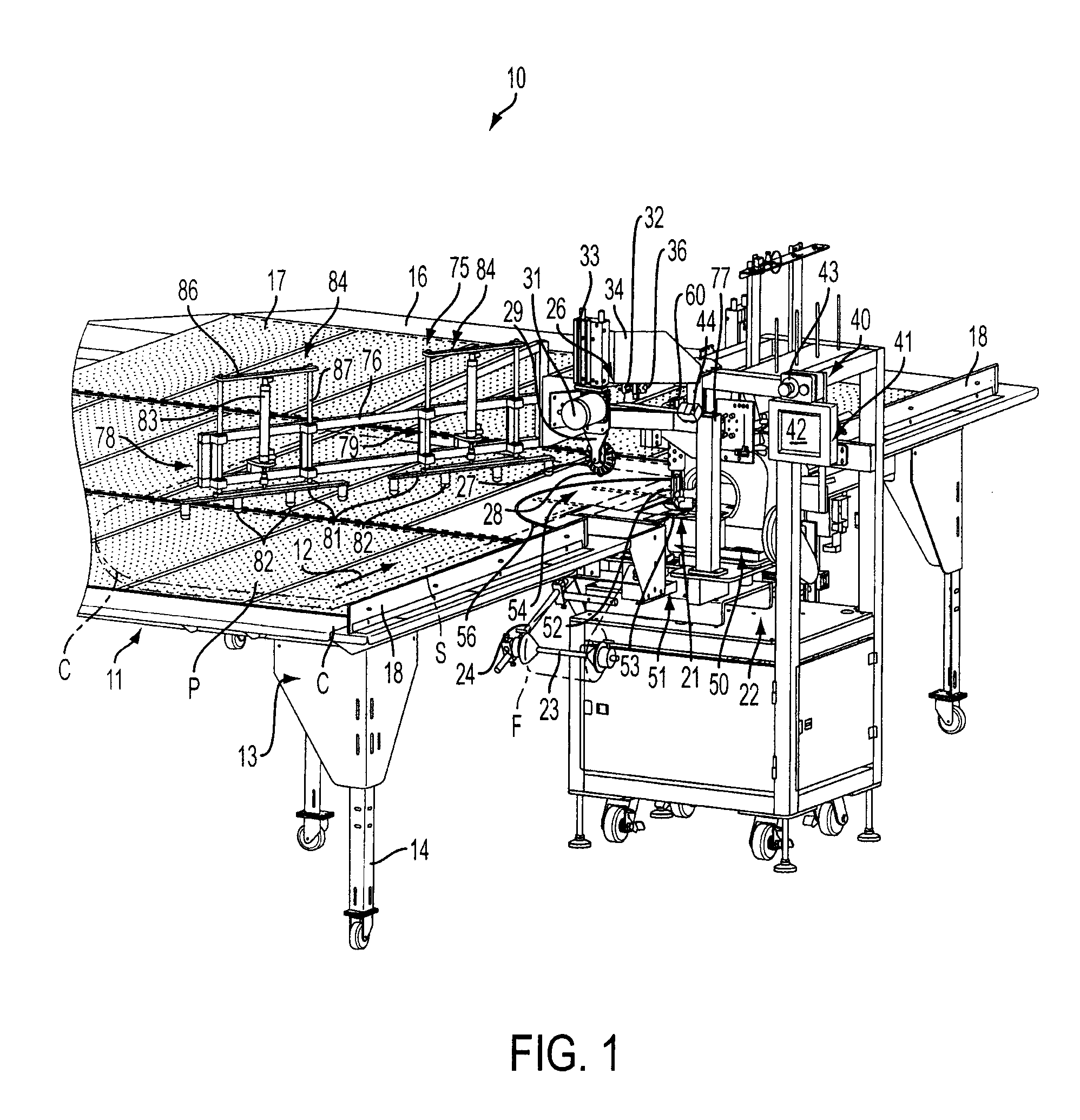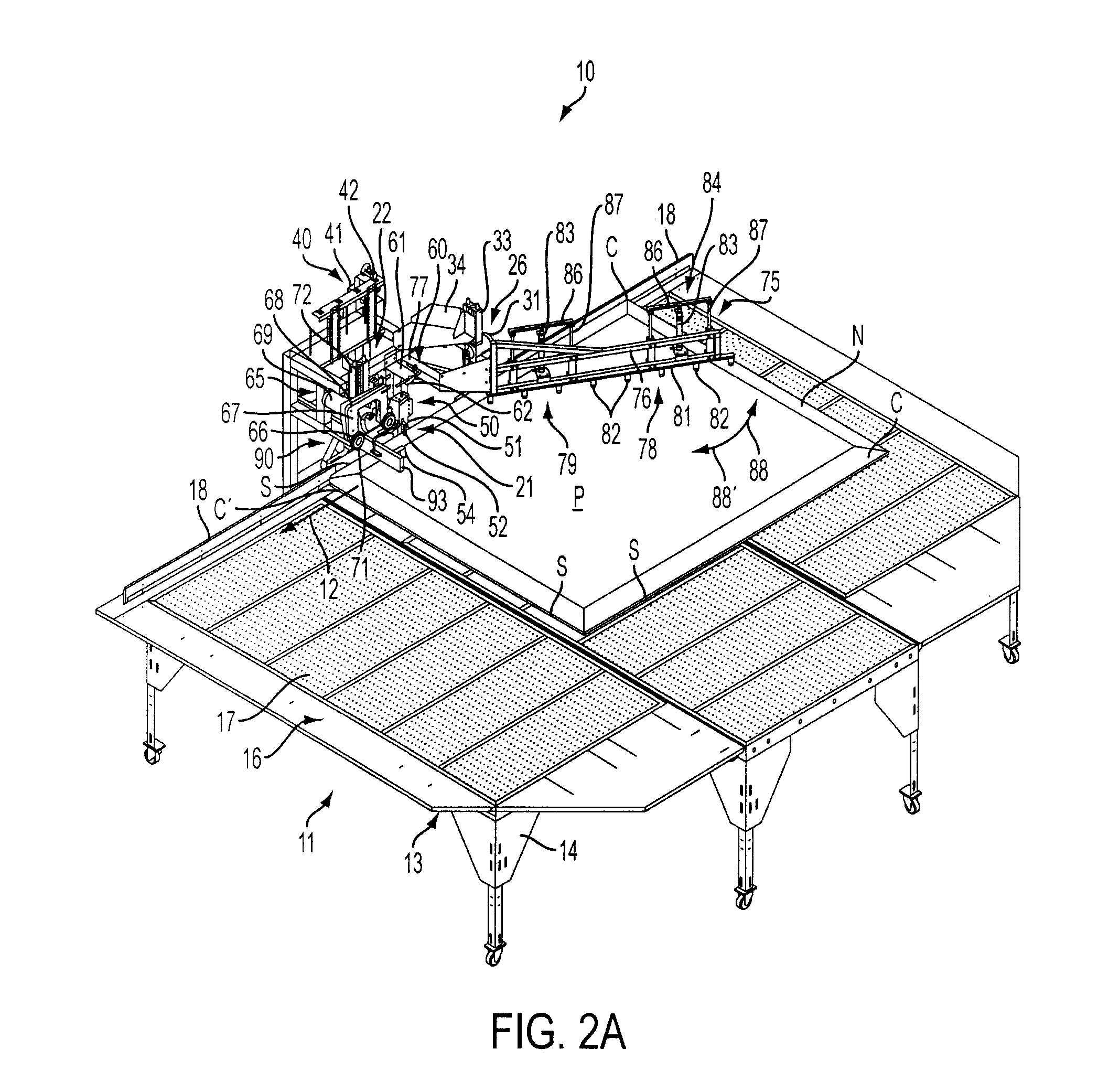Automatic panel sewing and flanging system
a technology which is applied in the field of automatic panel sewing and flanging system, can solve the problems of increasing the cost and slow production of such articles, limiting the type and number of sewing operations, and most sewing operations traditionally have been extremely labor-intensive, etc., and achieves less pleating and distortion, and more accurate rounded or accurate corners.
- Summary
- Abstract
- Description
- Claims
- Application Information
AI Technical Summary
Benefits of technology
Problems solved by technology
Method used
Image
Examples
Embodiment Construction
[0015]Referring now to the drawings in which like numerals indicated like parts throughout the several views, FIGS. 1-3 generally illustrate one embodiment of the automatic panel sewing and flanging system 10 according to the principles of the present invention, while FIGS. 4A-5 schematically illustrate an example embodiment of the method of operation of the automatic panel sealing and flanging system. In general, the automatic panel sewing and flanging system can receive a panel P, such as a quilted fabric or other textile panel for use in forming mattresses, foundation sets and / or other similar articles, for trimming and sewing of the side edges S thereof. The present invention is further adapted to attach a flanging material F along the side edges S and about corner portions C of the panel with pleating and distortion of the corner portions of the panel being sewn being substantially minimized and with the panel thus being formed with more accurate or consistent corners, includin...
PUM
 Login to View More
Login to View More Abstract
Description
Claims
Application Information
 Login to View More
Login to View More - R&D
- Intellectual Property
- Life Sciences
- Materials
- Tech Scout
- Unparalleled Data Quality
- Higher Quality Content
- 60% Fewer Hallucinations
Browse by: Latest US Patents, China's latest patents, Technical Efficacy Thesaurus, Application Domain, Technology Topic, Popular Technical Reports.
© 2025 PatSnap. All rights reserved.Legal|Privacy policy|Modern Slavery Act Transparency Statement|Sitemap|About US| Contact US: help@patsnap.com



